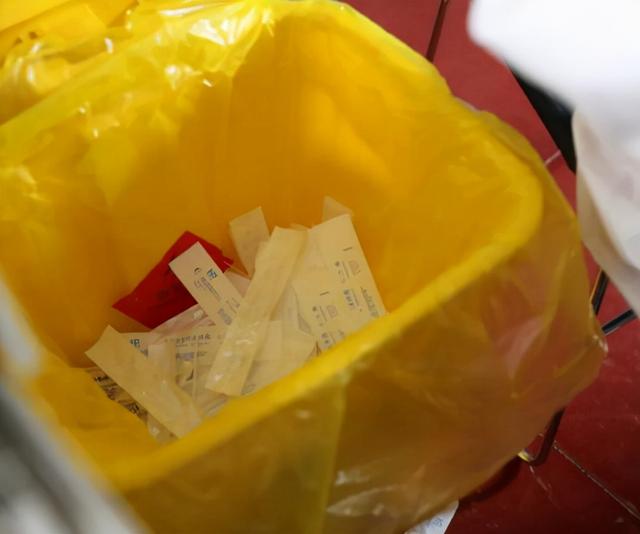醫院如何處理拭子廢棄物
2024-11-06
在醫院, 拭子 是標本採集的重要工具, 感染控制, 和診斷測試. 然而, 拭子廢棄物管理是醫療機構必須解決的一個複雜問題,以確保環境永續性和病人安全. 拭子和其他醫療廢物的處理受到嚴格的指導,以最大程度地減少污染並防止感染傳播. 以下是醫院如何管理拭子廢棄物的概述:
正確處理拭子的重要性
拭子, 包括棉花棒, 泡棉棉籤, 和植絨拭子, 用於廣泛的醫療程序. 使用後, 他們常被體液污染, 病原體, 或化學品. 拭子廢棄物處理不當可能導致交叉污染, 感染的傳播, 和環境危害. 醫院必須遵守衛生當局和環境保護機構制定的準則,以確保安全處理, 處理, 以及這些材料的回收利用.
步 1: 醫療廢棄物分類
醫院管理拭子廢棄物的首要步驟之一就是對廢棄物進行正確分類. 拭子廢棄物屬於以下類別 “受監管的醫療廢棄物” (平均重量) 由於其潛在的感染可能性. 醫療廢棄物通常分為以下幾類:
- 傳染性廢棄物: 這包括用於標本採集或傷口護理並被體液或病原體污染的拭子.
- 銳器廢棄物: 雖然拭子本身並不鋒利, 它們可能被針頭或其他尖銳物體污染,並進行相應處理.
- 非感染性廢棄物: 有些拭子可能被非傳染性物質污染,被歸類為無害物質.
透過對廢棄物進行正確分類, 醫院確保以適當的方式處理每種類型的廢物.
步 2: 安全處置和隔離
收集拭子廢棄物後, 它被分成顏色編碼的, 符合當地醫療廢棄物監管要求的防漏容器. 在大多數醫院, 使用三層廢物分類系統:
- 紅色垃圾箱: 對於傳染性廢棄物, 例如用於檢測病毒或細菌感染的拭子.
- 黃色垃圾箱: 對於一般醫療廢棄物,可能不具傳染性,但仍需謹慎處理.
- 鋒利的容器: 對於可能接觸過棉花棒的用過的針頭和尖銳物體.
每個廢物容器均緊密密封,以防止洩漏並最大限度地降低感染風險. 醫院也利用專門的, 生物危害袋用於盛裝用過的拭子和其他廢棄物,然後再運至處置區域.
步 3: 處理及處置方法
拭子廢棄物通常經過消毒和處理,以確保其不含任何傳染源. 處理醫療廢棄物的方法主要有兩種::
- 高壓滅菌: 處理傳染性廢棄物最常用的方法, 高壓滅菌使用壓力蒸氣對廢棄物進行滅菌. 高溫可確保拭子上的任何病原體在送去最終處置之前被消滅.
- 焚化: 在某些情況下, 醫療廢棄物經過高溫焚燒,確保有害微生物徹底消滅. 此方法對於無法高壓滅菌的廢棄物特別有效.
滅菌後, 處理後的廢棄物被送往垃圾掩埋場或回收設施, 取決於廢物的性質. 醫院越來越多採用環保做法, 例如減少產生的不可回收廢棄物的數量, 有的拭子消毒後可以回收再利用.
步 4: 回收和永續發展
最近幾年, 許多醫院已轉向更永續的廢棄物管理實踐, 包括回收和再加工某些醫療物品. 雖然由於污染,拭子本身可能無法回收, 一些與拭子廢棄物有關的資料, 例如包裝和塑膠部件, 可以回收利用. 醫院正在投資廢物轉化能源技術和永續處置方案,以減少對環境的影響.
此外, 醫療製造商 正在生產由可生物降解或環保材料製成的拭子和其他消耗品,以減少產生的不可回收廢物的數量. 醫院還可以透過優化庫存管理和減少一次性拭子的不必要使用來減少環境足跡.
步 5: 員工培訓和合規
有效的廢棄物管理始於訓練有素的醫護人員. 醫院為所有參與醫療廢棄物處理和處置的人員提供培訓, 確保他們了解安全協議和適當廢物分類的重要性. 醫院也遵守當地, 狀態, 和國家法規,以盡量減少接觸傳染病和環境污染的風險.
結論
醫院必須認真管理拭子廢棄物,以保護公眾健康和環境. 透過遵循嚴格的分類協議, 處置, 和處理醫療廢棄物, 醫療機構最大限度地減少與拭子處理相關的風險. 隨著醫院繼續擁抱永續發展, 廢棄物管理實踐將持續發展以滿足醫療保健需求和環境目標.

















